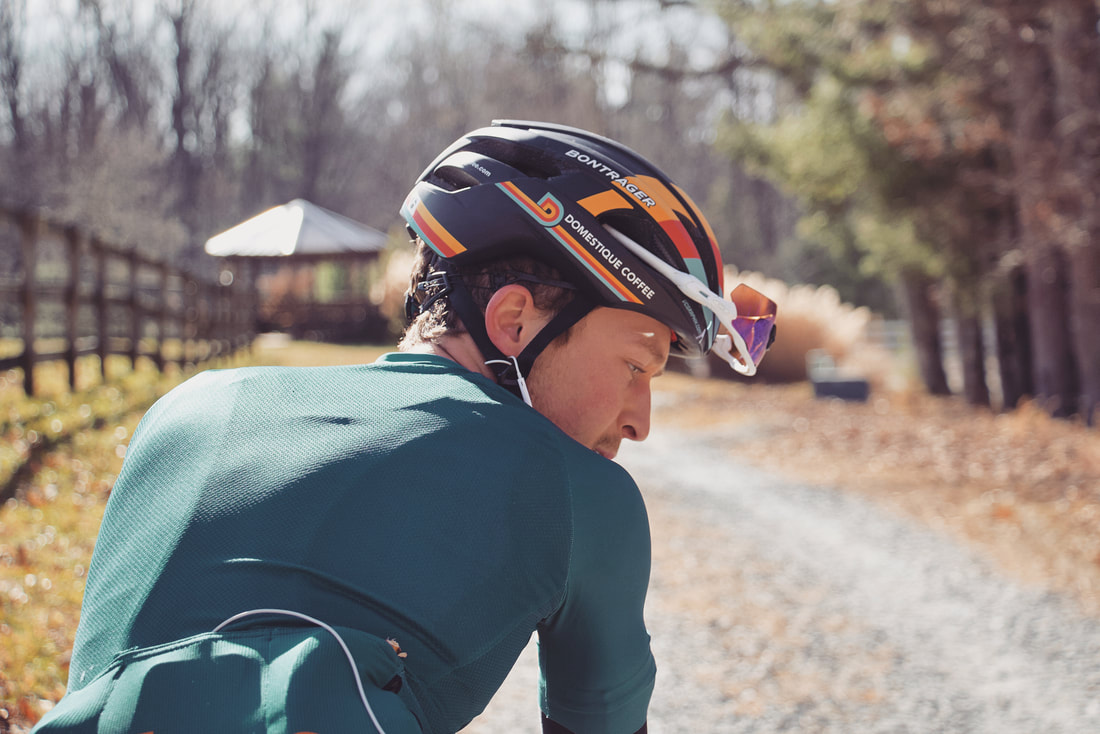|
Strength
As colors change, temps drop, and many of us transition into the infamous “base" season, it’s easy to feel a bit lost. Fellow athletes, friends, and foes on STRAVA are rolling out the miles and boasting huge days in the saddle while social media pours out content of people "on the grind". Post-season anxiety can build when you feel like you're going back to the drawing board or losing fitness gains from the year, but let’s clear that up: you are NOT. I’m even subject of this myself and find worry creeping in…however diligence, balance, and having a curated approach to training can do wonders for you. Long, monotonous days on the bike certainly have their place, but there are a few key aspects of training and everything else off-the-bike that are crucial in preparing for the coming season. The first piece of that puzzle? REST. Then, as we make the shift this winter, don't neglect how a basic strength training routine can impact your experience. Let’s explore that. Strength Training The benefits of strength training are growing more and more apparent. Whether it be 90min World Cup races or all day gravel expeditions, athletes are steering away from body-typing and the science is reaching the public. We are seeing a push towards time in the gym. Aerobically, everyone can "get fit" fast. However, strength training can dramatically improve overall raw power, repeatability, injury prevention, and (wait for it) even aerobic fitness! Strength training is actually quite variable in and of itself and is also super time efficient. Going into the gym and lifting heavy is actually great, but it’s something that has to be built up to. A lot can be done in your home with simple, basic moves while hallenging your body with dynamic and varying exercises, building core strength, and touching up on your upper body. This full body experience is what enables your body to work properly. Supplementing some dynamic work in like this does loads for activating important muscles throughout your body AND improving imbalances. However, lifting heavy things is where the magic happens for us non-weight-bearing endurance athletes. Guess what? This becomes especially important with aging. My Go-To Some key aspects of my strength routine are to include those that are targeting stabilization muscles and/or isolating a body part to prime my body + core work – like including a balance pad and doing single leg activities (these are usually a variation of Split Squats, Pistols, Single Leg Dead Lift, or others). Then, I dial in those traditional workouts like front and/or regular squats and deadlifts mostly. I usually make circuits that include an upper, lower, and core exercise to get solid rest between. Tossing in core exercises in between sets is super easy to do and helps add that little bit of attention to the full core. As far as upper body, it is often neglected by cyclists because they feel they “don’t need the weight”. Mountain bike racing and gravel demands a lot from your upper body…and if you can’t answer that demand then the riding becomes sloppy. This can ruin your recovery throughout the race, leave you trailside picking yourself up, or just wasting energy making up time. Progression You want to start LIGHT – and if you’ve never done strength training, then body weight may be all you need. The general plan is to work from sets of ~3 x 15 with light weight to 3-4 x 10-15 with moderate weight to the magic range of 4-6 x <10 reps. This is the power-building phase. CONTACT ME PLEASE if you would like a bit more info or want to get an idea of a good routine to follow – I'd be happy to help! *For a bit more on strength in the gym and the science behind it, I highly suggest this podcast by Mark Sisson and Jacques Devore. player.fm/series/primal-endurance-podcast/126-jacques-devore
1 Comment
As the weather turns and the Holiday season ramps up, things can get a bit busier than normal and workouts will be missed. Focus on the Quantity of your Quality. This week’s article is on how to find your rhythm and manage the unpredictability of training during the Holiday season.
Whether it’s office meetings, family gatherings, or travel, it’s easy to get out of rhythm with your training plans. Often we counter these mishaps and obligations with more stress on “making up for it” however possible. This is something I’m all too familiar with and because of that I want to share my insight from both a personal and coaching perspective. Adaptability This is the keystone of managing your training plan. We want to stick as closely to our plan and make it work with our conditions, yes, but we don’t want to create stress around deciding not to follow it. This means to be adaptable in the sense of keeping your GOALS for the week in mind while choosing the best way to accomplish them. Is the weather looking down Sunday through Monday? Then maybe you stretch out that ride on Saturday with expectation of being indoor or training in the gym later. You’ve then challenged yourself on the endurance front, took advantage of the good weather, and can enjoy a warm short session inside with family. Limiters: Time vs. Energy There are two main limiters to consider when things get busy: time or energy? If you are limited by time, then that is how you have to maneuver training plans. It may be best to condense workouts to be more specific, swap with a strength training or cross-training day, or get into a ride routine that is blocked off. If you are limited by energy, then you have to consider the fact that things main arise throughout your day that drain your energy and thus making consistency in your training harder. Train Hard, Rest Harder Training makes you slow. Recovery makes you fast. What? Yes that’s right because training breaks your body down. The recovery periods, days, and modalities are how you rebuild and compensate for that work. There is a time to toughen up and get out the door, but there is also a time to slow down. As training accumulates, it becomes more and more important to pay attention to how you feel and how you are recovering. Additionally, you will have more on your plate and should allow yourself the freedom to take a day off. Your body knows no difference between physical stress (training) and mental stress. Be mindful of your energy levels and when you have to/can go hard then go hard; when you need to go easy, then GO EASY. Controlling the Controllable(s) Last but not least, control what you can…don’t fret what you can’t. This one is what I have to remind myself weekly (probably daily). It is so easy to get caught up in what your buddy is doing, what you can’t do, or what’s in the way. Compartmentalize your schedule up into things that are “controllable” and “uncontrollable”. This piggy-backs the ‘Limiters’ section earlier in the article. Family meals, travel time, and weather may be your “uncontrollable” items that are going to happen regardless; plan your training around that. Are you on the trainer most winter nights? Then focus on efficient + structured rides that are “bang for buck”. Are you snowed in a lot and cross training with skiing or something else? That is great – you have the chance to develop your musculoskeletal system in beneficial ways that will help long term development and health. I have learned (largely in part to clinical sports psychologist Kristin Keim) that no matter what, control the controllable(s). That being: focus only on what you can do and put your mental and physical energy into that. Above all, enjoy your process. |
AuthorCarson Beckett, 26 | Coach, Pro, and Co-Founder of Dirt Camp Racing | Carson Beckett Coaching CategoriesArchives
January 2024
|


 RSS Feed
RSS Feed